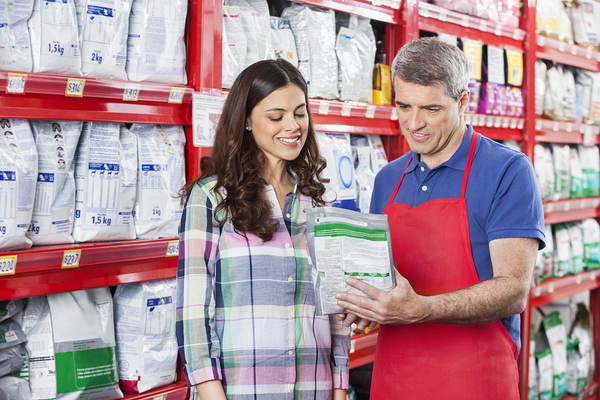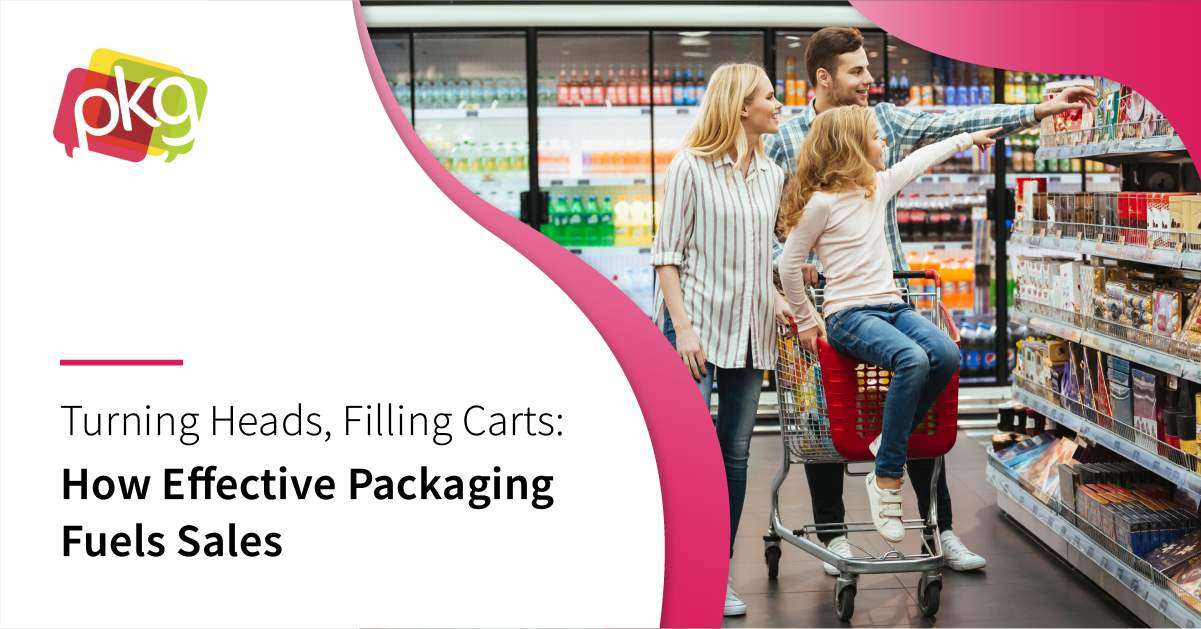Flexible packaging is appearing on store shelves for an increasing number and variety of favorite consumer packaged goods. Everything from pet food to baking ingredients to cosmetics can be found in flexible packaging, and more consumer products are shifting to it because of both consumer and producer preferences.

Consumers like that flexible packaging keeps their (and their furry friends’) food fresh with minimal effort.
A 2015 study by the Flexible Packaging Association (FPA) found that many more brand owners are shifting toward using flexible consumer packaging on an increasing share of products than those who are shifting toward a greater share of products in rigid packaging. Nearly one-third of survey participants said that over the next five years they are likely to switch to a mix of mostly or entirely flexible packaging.
What Flexible Consumer Packaging Is Particularly Well-Suited For
Shelf-stable, refrigerated, and frozen goods can all benefit from flexible packaging due to advances in high-barrier films that are durable and that protect products well. Products that consumers are expected to consume on the go (like snacks) are great choices for flexible packaging, and today’s young adults have no trouble adopting flexible packaging, having grown up with flexible juice pouches and the like.
Products that were once sold in containers with sharp edges (like cans) are well-suited to flexible consumer packaging, because flexible packaging is safer and consumers do not need an opener to get to the product inside. Products that are packaged using techniques that generate high amounts of greenhouse gases can become far more sustainable when switched to flexible packaging. Greenhouse gases can be cut by up to 92 percent when products are switched from #10 cans to flexible pouches.
Consumers and Flexible Packaging
Consumers like flexible packaging for its convenience and durability. It is lighter than many rigid packaging materials; is often re-sealable, eliminating the need for additional storage containers; and protects food well from supermarket shelf to pantry. Flexible packaging is easy to open and produces less waste. Miniature packages of cosmetics like shaving cream or shampoo are lightweight and convenient for travel, and foods served in single-serve flexible packaging are convenient for busy parents and their children.
Older adults like that flexible packaging is generally easy to open because of laser scoring or perforations, and re-sealable packaging helps ensure that less food is wasted due to spoilage. Pouches with large, easy-grip spouts are easier to open and close for older people than are typical glass jars.

Older adults like the ease of handling flexible packaging offers.
Manufacturers and Flexible Consumer Packaging
Flexible consumer packaging is more convenient for manufacturers as well. Placing products in a single flexible package rather than, say, a plastic bag inside a box makes the packaging process faster and less hungry for materials. Production costs tend to drop, as do shipping and transportation costs due to lighter-weight products. The FPA study referenced above found that switching to flexible packaging not only cut operational costs, but also strengthened brands with consumers, often while achieving higher supply chain efficiencies.
Sustainability and Flexible Consumer Packaging
Recycling opportunities for flexible packaging are emerging, but are not as prevalent as recycling opportunities for things like aluminum cans and plastic bottles. However, even with limited recycling opportunities, flexible packaging is still more sustainable than other types of packaging due to the simple fact that it uses a minimum of packing materials.
A Packaging World survey of brand owners asked which innovations they want most in flexible packaging, and better recycling options was a top response. It is not that flexible packaging is not recyclable, but that more consumers need access to options to recycle it. Still, however, flexible packaging is considered overall friendlier to the environment than other packaging types.
In short, flexible packaging makes sense for an increasing number of consumer packaged goods in all categories. Manufacturers like that it can simplify packaging operations while cutting weight and ultimately cutting transportation costs.
Consumers enjoy the convenience and ability to reseal products without the need for additional storage containers, and older consumers in particular enjoy that flexible packaging is easy to open and easy to reseal, allowing them to stretch their food dollars further than they could with older packaging types.
It is no mystery why more manufacturers are shifting away from rigid packaging toward flexible consumer packaging for an increasing share of the products they make.
PKG Branding is always on the forefront of these new marketing initiatives - to read more, please subscribe to our blog to always be current on the latest packaging design industry news.
 |
 |







